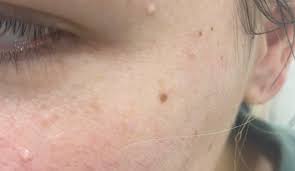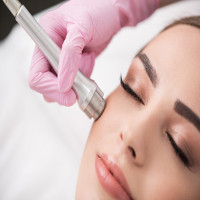Milia vs. Whiteheads: Dermatologists Explain the Difference

Strong 8k brings an ultra-HD IPTV experience to your living room and your pocket.
In the realm of skincare, distinguishing between various types of blemishes can be challenging. Milia and whiteheads, although similar in appearance, have distinct characteristics and necessitate different treatment approaches. Milia Dermatologists play a crucial role in elucidating these discrepancies and guiding individuals toward effective skincare routines.
What are Milia?
Milia are small, dome-shaped bumps that typically appear on the face, particularly around the eyes, cheeks, and forehead. Unlike acne, which involves clogged pores, milia form when keratin, a protein found in the skin, becomes trapped beneath the surface. This accumulation of keratin creates tiny cysts that manifest as white or yellowish bumps.
Understanding Whiteheads
Whiteheads, also known as closed comedones, are a type of acne lesion characterized by small, raised bumps with white or flesh-colored tops. These blemishes occur when hair follicles become clogged with sebum and dead skin cells. The pore remains closed, leading to the formation of a small bump on the skin's surface.
Key Differences Between Milia and Whiteheads
While milia and whiteheads may share a similar appearance, several distinguishing factors set them apart:
1. Cause
Milia: Result from trapped keratin beneath the skin's surface.
Whiteheads: Caused by the accumulation of sebum and dead skin cells within hair follicles.
2. Appearance
Milia: Small, white or yellowish bumps that do not contain pus.
Whiteheads: Small, raised bumps with white or flesh-colored tops.
3. Location
Milia: Commonly found around the eyes, cheeks, and forehead.
Whiteheads: Can occur on various areas of the face, including the chin, nose, and forehead.
4. Composition
Milia: Comprised of trapped keratin, forming tiny cysts beneath the skin's surface.
Whiteheads: Consist of a mixture of sebum and dead skin cells within closed pores.
5. Treatment
Milia: Treatment typically involves extraction by a dermatologist or skincare professional.
Whiteheads: Can be treated with topical medications containing ingredients such as salicylic acid or benzoyl peroxide.
Seeking Professional Guidance
While understanding the differences between milia and whiteheads is valuable, seeking professional guidance from a dermatologist is essential for accurate diagnosis and treatment. Dermatologists possess the expertise to assess individual skin concerns and recommend tailored skincare regimens to address specific issues effectively.
Types of Dermatologist-Approved Milia Removal Tools
1. Lancets
Lancets are small, sharp instruments that are used to create a tiny incision in the skin over the milia. This allows for easier extraction of the bump without causing unnecessary trauma to the surrounding skin.
2. Extractors
Milia extractors are small, metal tools with a looped end that is used to gently press and extract the contents of the milia. These tools are designed to apply just the right amount of pressure to remove the bump without causing damage to the skin.
3. Comedone Extractors
Similar to milia extractors, comedone extractors are designed to remove various types of skin blemishes, including milia. These tools typically feature different sized loops to accommodate different types and sizes of milia.
4. Microdermabrasion Devices
Microdermabrasion devices use tiny crystals to exfoliate the skin and remove dead skin cells, including milia. While these devices can be effective, they should only be used under the guidance of a dermatologist or trained professional to avoid damaging the skin.
Importance of Skincare Education
In conclusion, distinguishing between milia and whiteheads is crucial for implementing an appropriate skincare routine. By educating oneself on the characteristics and causes of these blemishes, individuals can make informed decisions regarding their skincare practices and seek timely intervention from dermatological professionals when necessary. Remember, prioritizing skincare education empowers individuals to achieve healthy, radiant skin.
Note: IndiBlogHub features both user-submitted and editorial content. We do not verify third-party contributions. Read our Disclaimer and Privacy Policyfor details.



